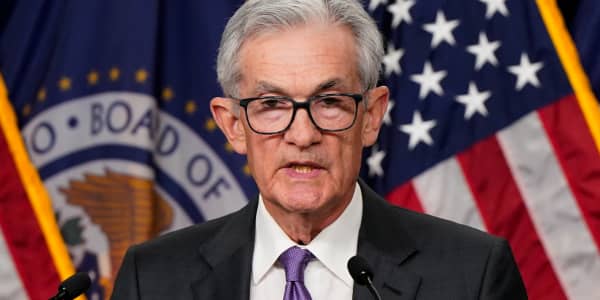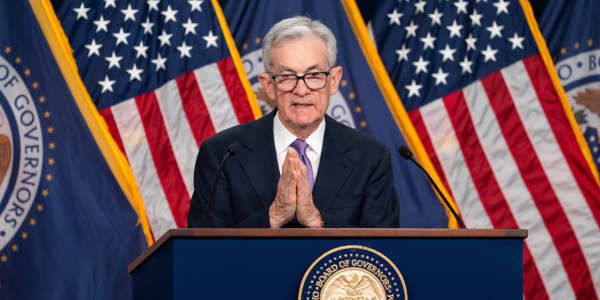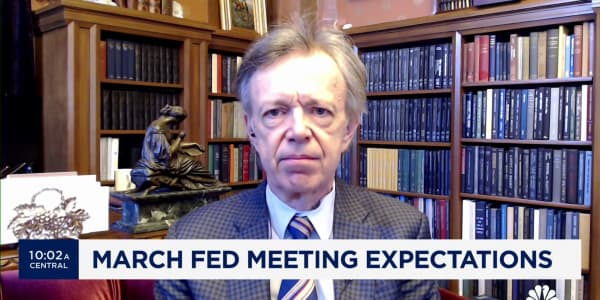
The doves have taken flight on Wall Street with expectations for continued easy monetary policy from the Federal Reserve soaring to new heights.
Respondents to the CNBC July Fed Survey now forecast just one rate hike this year, down from a 1.5 average in the June survey and nearly three rate hikes expected at the beginning of 2016.
The next hike, according to the 43 respondents, won't come until December, three months later than the previous forecast. The outlook for the Fed funds rate fell to just 60 basis points this year, 1.2 percent next year and 2.4 percent long term. The survey was conducted on Thursday and Friday.
"Brexit will keep the Fed from acting next week, and given the Fed's proclivity to keep rates unchanged before a U.S. presidential election, we won't see a rate hike until December at the earliest," Rob Morgan, chief investment officer of Sethi Financial Group, wrote in response to the survey.
In the wake of the Brexit vote, respondents now see a 55 percent chance of a recession in the U.K. in the next 12 months, and a 38 percent chance in the EU, compared with 22 percent for the U.S. About three-fourths of respondents, including economists, analysts and fund managers, say Brexit increases the chance that other countries will leave the European Union.
The vote is viewed as a major concern for the U.K. and European economies, but much less so for the U.S. Asked to grade the economic impact of the Brexit vote on a scale of 1 to 10, respondents' answers averaged about 7 for the British economy, 5 for the European Union and just 2.8 for the United States.
Global economic weakness remains the biggest threat to the U.S. expansion, the top choice of 22 percent in the survey, followed by tax and regulatory policies with 20 percent. But outlook for U.S. growth remained stable at 2 percent this year and 2.26 percent next year. Inflation is forecast to be lower at 1.6 percent this year and rise to 2 percent next year.
"The discussion over Brexit has masked the fact that long-term inflation breakevens have been trending lower since April," wrote Guy LeBas, chief investment strategiest of Janney Montgomery Scott. "If inflation doesn't rise, neither will rates. These deteriorating expectations are a hint that markets have little long-term faith in any policy increases, and it's hard to imagine overnight rates will reach more than 1 percent in this cycle, unless inflation expectations change drastically."
With the outlook for inflation low and concerns about overseas growth, forecasts for the yield on the 10-year note have also fallen. No change is currently forecast in the benchmark rate from the current level of 1.57 percent through year-end, which is a decline of 25 basis points from the prior survey. On average, respondents see the yield rising to just 2.02 percent by the end of 2017.
The outlook for stocks this year and next is modestly higher, a shift from the pessimism that prevailed earlier this year. The S&P 500 is forecast to rise to 2,183 this year and 2,249 next year, for a gain of 4 percent over the next 17 months.
"The U.S. economy is currently in a sweet spot — stocks up, yields down, $2 gasoline, unemployment below 5 percent," wrote John Augustine, chief investment officer of The Huntington National Bank. "Not sure how long it will last. Americans should take advantage of it while they can!"
While many on the Street predict a dovish Fed, not all are sure it's the right policy. Some see the Fed falling behind the economic curve and worry about the costs to the economy.
"Core CPI inflation is 2.3 percent, the economy is at full employment, and the stock market is at a record high," said John Ryding, founding partner and chief economist of RDQ Economics. "A prudent Fed would be (raising) interest rates. However, we see this Fed as being too preoccupied with risks to hike rates before December."
And John Donaldson, director of fixed income of Haverford Trust, writes that the Fed "has painted itself into a corner. ... They appear reactive to the most recent noise rather than underlying trends in the economy."





